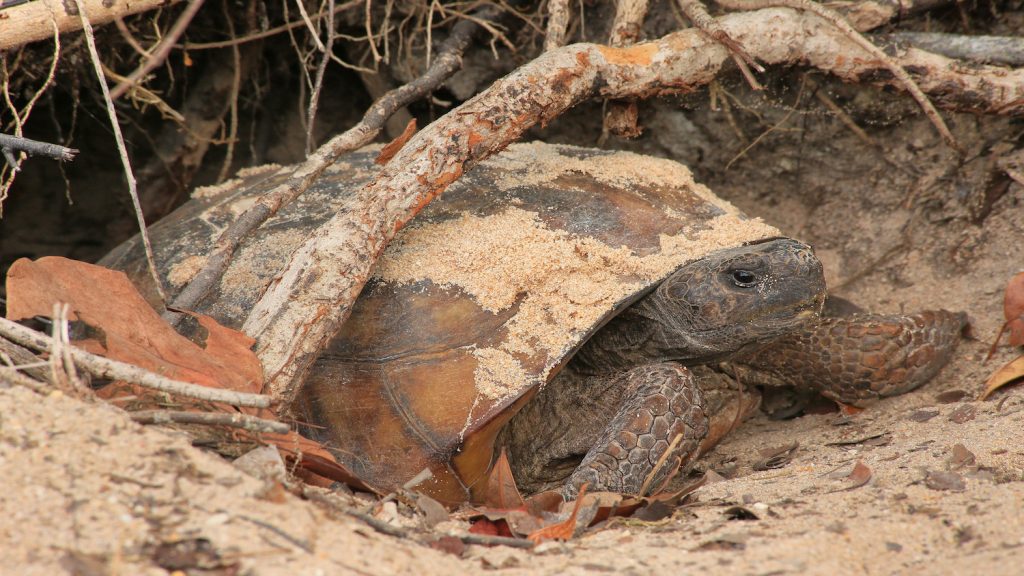Science to Support Adaptive Landscape Planning and Decision Making for Gopher Tortoise Conservation

Principal Investigator: Clinton Moore, Assistant Unit Leader (Wildlife), USGS Georgia Cooperative Fish and Wildlife Research Unit, University of Georgia
Project Completion: September 2018. This project has now been completed.
Implements Science Theme: 2 & 4
Overview
The gopher tortoise (Gopherus polyphemus) is a familiar species across the southeastern Coastal Plain, but its population has declined significantly over the decades. One reason is that much of its primary habitat, sparse stands of mature pine, has been replaced by development or agriculture. Another is that periodic ground fires, which are important for providing needed forage for the tortoise, have been largely suppressed on the landscape. The gopher tortoise is a “keystone” species, meaning that its disappearance from the landscape would jeopardize the existence of many other species that make use of its underground burrows.
Besides tortoise habitat, the uplands of the Coastal Plain contain isolated seasonal wetlands that are important for the life cycles of many amphibian species. The state of Georgia would like to conserve more of the landscape for the statewide protection of the gopher tortoise and associated natural communities. The different steps it could take include conservation partnerships formed with private landowners and land purchases as opportunities arise. But these decisions are hard because of uncertainties about tortoise population ecology and future patterns of urbanization. The goal of this project is to develop a decision support framework to help build efficiency in the selection of conservation actions that lead to more viable landscapes to support the statewide tortoise population and associated species and communities.
More Information
View Feb 2016 project update presentations.
